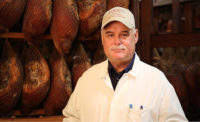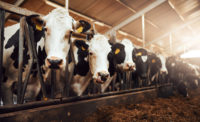Technology in the meat industry tends to be cyclic. Over a period of three to five years, that innovation disseminates through the meat industry and is adopted by the leading meat and poultry processors. Technology naturally starts with the very largest processors, where there is the most opportunity for profit and impact. From there, that technology is scaled downward and is made available for the rest of the industry.
For the sausage industry, there are some elements that can be scaled downward, and there are some that cannot, explains Dr. Jeff Sindelar, associate professor and extension meat specialist at the University of Wisconsin-Madison.
“Sometimes, with technologies that are designed for a 6,000-pound blender, you just can’t do in a 200-pound blender,” Sindelar explains. “The scalability just isn’t there. But across the board, there is technology that has helped the small processor. The ability for portion control, efficiency and batter management, to improve quality, cost, uniformity and consistency, that all has a linear flow from large to small equipment.”
Co-extrusion, for instance, is something that can be taken down to scale for smaller processors, or for larger processors with small-scale sausage production operations. The most common extrusion in the United States is collagen co-extrusion, using a collagen dough primarily from beef. The co-extrusion system involves extruding a casing in the form of a collagen gel. That gel is then stabilized by removing the moisture, hardening the gel to where it acts and performs like a casing.
Sindelar says there aren’t many small processors using that technology because it’s a very expensive technology, and the equipment hasn’t downsized enough where smaller businesses are able to afford it or have room for it.
“For a collagen co-extrusion system, you have to adjust formulation for that process, and you have to have the equipment and the footprint to have all that equipment,” he says.
“The other option, which is more available, which we have at the University of Wisconsin-Madison lab, is an alginate system. That basically takes two stuffers, and then you need a calcium chloride bath, which is very short, so it doesn’t take a big footprint to set that casing. It’s quite a bit less expensive, but still a fairly significant cost.”
Tiefenthaler Quality Meats, located in Holstein, Iowa, makes a skinless wiener and skinless brats using a co-extrusion system. John Tiefenthaler, owner and operator, says that handling the co-extruded sausages takes some careful handling.
“We’ve done it long enough now that we can get it done in an efficient and timely fashion,” he says.
Tiefenthaler Quality Meats produces a number of sausage varieties, and its skinless sausages are selling in an expanding radius from its Holstein home. The company produces a number of products with inclusions, and that can occasionally be problematic with co-extruded sausages.
“We do get asked about sauerkraut,” Tiefenthaler says. “We have tried it, but even when the vinegar is rinsed off, [the sausage] won’t stay together. We have a little bit of that issue with a salsa bratwurst that’s skinless. The tomato is acidic and keeps it from adhering to itself. If you had a casing, you tie a knot in both ends and it can’t leave. But with skinless, you have to hold it in there.”
Sindelar notes that an acidic product like sauerkraut can denature the protein and prevent a proper bind. The result can be a mushy or crumbly product. However, an acidic inclusion, given its low pH, can have a positive effect.
“Sauer kraut, even though it’s not scientifically measured and validated, does provide some shelf life because of the contribution it has with acid, which is a known antimicrobial,” Sindelar says.





Report Abusive Comment